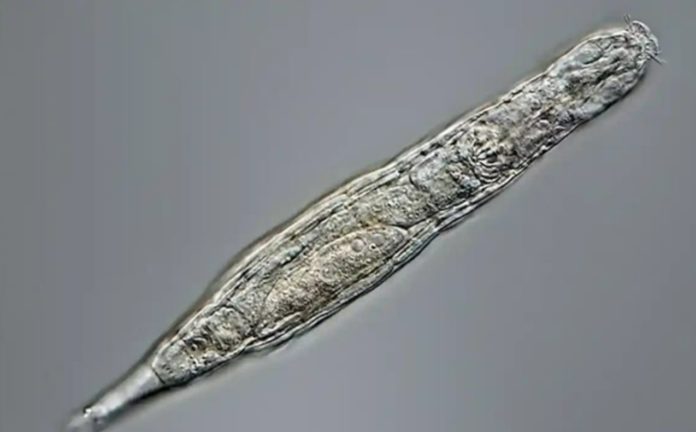Ancient rotifers (Bdelloid rotifers) successfully reproduced after “resurrection” and were able to survive the repeated freezing, in contrast to modern congeners.
Biologists have revived several rotifer worms that have spent about 24 thousand years in the permafrost. The new study was published in the journal Current Biology, ScienceDaily writes.
As you know, the rotifer is one of the most primitive multicellular animals, distinguished by its incredible vitality. It can tolerate prolonged droughts and lower temperatures, “drying out” itself.
- Scientists in Fear of This New Predator From Red Sea Eating Native Species in Mediterranean
- Does This Mean We Stopped Being Animal and Started Being Human Due to ‘Copy Paste’ Errors?
- The One Lifestyle Choice That Could Reduce Your Heart Disease Risk By More Than 22%
- Aging: This Is What Happens Inside Your Body Right After Exercise
- Immune-Boosting Drink that Mimics Fasting to Reduce Fat – Scientists ‘Were Surprised’ By New Findings
Previous experiments have shown that bdelloid rotifers that live in the northern regions of Russia can come to life after six to ten years of existence in frozen soil.
Biologists from the US, Germany, the Czech Republic, and Russia have found several viable rotifers in permafrost samples collected at a depth of 3.5 meters off the banks of the East Yakutsk Alazeya River. Radiocarbon analysis showed that the age of the permafrost is 24,000 years.
Our report is the hardest proof as of today that multicellular animals could withstand tens of thousands of years in cryptobiosis, the state of almost completely arrested metabolism
says Stas Malavin of the Soil Cryology Laboratory at the Institute of Physicochemical and Biological Problems in Soil Science in Pushchino, Russia.
After the “resurrection”, the rotifer belonging to the genus Adineta could reproduce by parthenogenesis, and also successfully survived repeated freezing.
Scientists have suggested that the ancient relatives of rotifers have developed a certain defense mechanism, the study of which will help to learn how to protect the tissues of humans or other mammals from destruction when they are frozen.
Bdelloid rotifers may be the toughest, tiniest animal you’ve never heard of. https://t.co/p0OfKZR7yg pic.twitter.com/pZharBdSeA
— The New York Times (@nytimes) June 8, 2021
The takeaway is that a multicellular organism can be frozen and stored as such for thousands of years and then return back to life — a dream of many fiction writers
Malavin says.
Of course, the more complex the organism, the trickier it is to preserve it alive frozen and, for mammals, it’s not currently possible. Yet, moving from a single-celled organism to an organism with a gut and brain, though microscopic, is a big step forward.
- Scientists in Fear of This New Predator From Red Sea Eating Native Species in Mediterranean
- Does This Mean We Stopped Being Animal and Started Being Human Due to ‘Copy Paste’ Errors?
- The One Lifestyle Choice That Could Reduce Your Heart Disease Risk By More Than 22%
- Aging: This Is What Happens Inside Your Body Right After Exercise
- Immune-Boosting Drink that Mimics Fasting to Reduce Fat – Scientists ‘Were Surprised’ By New Findings
